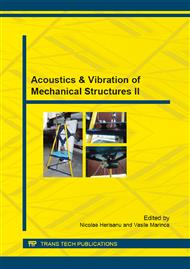p.225
p.230
p.236
p.242
p.249
p.257
p.262
p.267
p.273
Vibration Aspects on Local Light Rail Transportation
Abstract:
With the ongoing pace of city development and urban population growth, public transportation is the solution for traffic decongestion. The extensive use of cars causing traffic jams, and more serious pollution, more and more people should travel by public transportation means. In this article, we tested and analysed the vibration characteristics of local tramway transportation by using vibration measurement and analysis system.In spite of increasing exposure to vibrations, transportation supervisors do not concern themselves to the health effects of whole-body vibration or hand transmitted vibrations. Exposure to whole-body vibration is a growing concern in industry, traffic and in other branches of the economy. This harmful physical factor endangers human health not only at work but also in everyday life: in public transportation.The paper concerns with the vulnerability of the human body to vibrations transmitted from trams. The accelerations of the vibrations were measured on the axes (x-, y- and z-axes), and these values were compared to the ones from standards for acceptable human exposure to whole-body vibration.
Info:
Periodical:
Pages:
249-253
Citation:
Online since:
October 2015
Authors:
Price:
Сopyright:
© 2015 Trans Tech Publications Ltd. All Rights Reserved
Share:
Citation:


